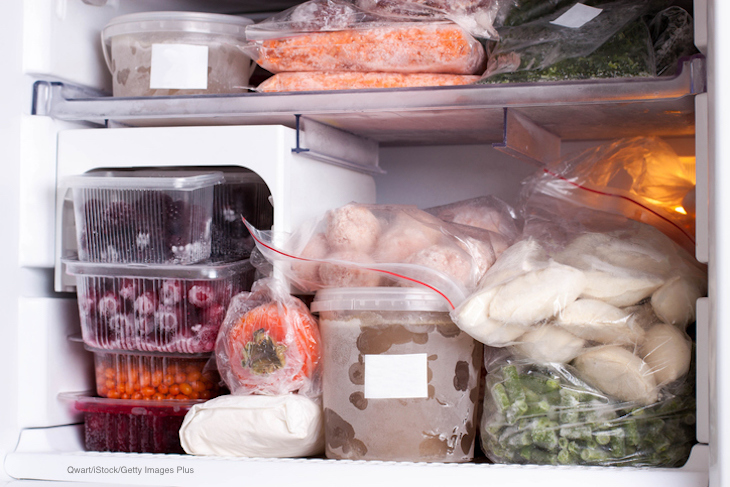There are major power outages in large swaths of the United States as a result of freezing temperatures and severe weather, and some bad food safety advice is circulating. When it’s cold outside and you are worried about frozen food thawing and spoiling, you may be tempted to put the food outside to keep it frozen. That’s a bad idea. Don’t put frozen food outside.

Even if there’s snow on the ground and icicles hanging from your roof, outside temperatures can vary wildly. Frozen food is only safe if it stays below 0°F. Snow and ice will be present on the ground until the air temperature gets above 32°F, and even warmer temperatures than that. This fluctuation can cause thawing and freezing in your frozen food, causing loss of quality and perhaps even the growth of pathogenic bacteria.
There are more risks to putting frozen food outside too. Animals can be attracted to the food and may try to eat it, and may even pee or defecate on or near the food. Many food poisoning outbreaks have been caused by animal feces on food growing in farm fields. And there’s a risk the food could get dirty or be exposed to chemicals. So don’t put frozen food outside.
You can use refrigerators and freezers without power as “old-fashioned iceboxes” that use ice instead of electricity to keep food cold, but not frozen. Frozen foods stored properly, below 40°F, will stay good for four to five days, which may be enough time for the power to come back on.
Most experts say that a refrigerator will keep food cold for about 4 hours if the door is kept cold, and a full freezer will hold its temperature for 48 hours. So use this capacity as long as you can.
When the power goes back on, it’s time to check your food to see if it’s unsafe. It’s too late for some, but all refrigerators and freezers should have a thermometer placed inside them. If you are lucky enough to have one, check if the temperature in the freezer is above 0°F and the refrigerator above 40°F. If perishable foods such as poultry, meat, seafood, and eggs, have been about 40°F for more than two hours, throw it out. Remember, even if you cook this food thoroughly, some bacteria can produce toxins as they grow that aren’t denatured by heat and can make you sick.
Any frozen food that still has ice crystals and has been kept below 40°F can be safely refrozen, even if it is partially or completely thawed. Discard any frozen food that feels warm to the touch. Never taste food to see if it’s safe. And when in doubt, throw it out. The cost of a foodborne illness will be much higher than the cost of replacing food.




